“In solving a problem of this sort, the grand thing is to be able to reason backward.”
 So wrote Sir Arthur Conan Doyle as his literary counterpart, Sherlock Holmes, in A Study in Scarlet. Doyle was a scientist and a trained physician, so when he imagined the great detective, he used science to set him apart from other crime practitioners.
So wrote Sir Arthur Conan Doyle as his literary counterpart, Sherlock Holmes, in A Study in Scarlet. Doyle was a scientist and a trained physician, so when he imagined the great detective, he used science to set him apart from other crime practitioners.
Where a policeman of the day would round up the usual suspects and beat a confession out of an unlucky bloke, Holmes employed deduction, the scientific method, and an acute sense of observation. Here’s five of his techniques that were ahead of his time.
1. Detective work.
“I am glad of all the details … whether they seem to you to be relevant or not.”
– The Adventure of the Copper Beeches
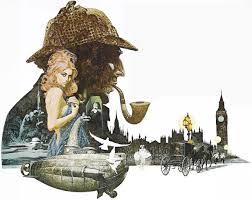 The fictional Holmes revelled in tiny details, and caught everyone by surprise by defining a subject with details relating to height, weight, gait, carrying a load, occupation and other surprising summaries simply by observing a wet foot print in a garden. He also explained how the evidence led to his accurate conclusion. And when the perpetrator was finally discovered and captured, the physical description was uncanny.
The fictional Holmes revelled in tiny details, and caught everyone by surprise by defining a subject with details relating to height, weight, gait, carrying a load, occupation and other surprising summaries simply by observing a wet foot print in a garden. He also explained how the evidence led to his accurate conclusion. And when the perpetrator was finally discovered and captured, the physical description was uncanny.
In addition, his ability to ‘reason backwards’ (looking at the criminal act and working his way backwards to lead him to evidence) helped guide him to a conclusion, a motive, and a culprit.
2. Fingerprints.
“As you may know, no two human fingerprints are ever alike.”
– The Brass Elephant
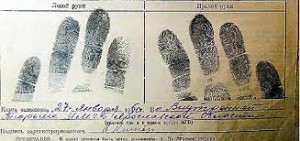 Holmes identified and used fingerprints initially in The Sign of Four, published in 1890. Scotland Yard did not adapt fingerprint recovery, comparison, and identification process until almost 11 years after The Sign of Four was published. He did not use fingerprints as the defining evidence, however — generally, the case was irrefutably solved by a variety of clues leading to the correct solution.
Holmes identified and used fingerprints initially in The Sign of Four, published in 1890. Scotland Yard did not adapt fingerprint recovery, comparison, and identification process until almost 11 years after The Sign of Four was published. He did not use fingerprints as the defining evidence, however — generally, the case was irrefutably solved by a variety of clues leading to the correct solution.
In The Adventure of the Norwood Builder, Inspector Lestrade thought he had his murderer when he was able to match a bloody print to John Hector McFarlane, an obvious suspect. Holmes was able to prove that MacFarlane was innocent.
Today, fingerprints are a standard method of identification for human individuals. Now stored in computer databases, analyzed and compared within seconds, fingerprints still require corroborating evidence to tell the whole story.
3. Ciphers.
“But what is the use of a cipher message without the cipher?”
– The Valley of Fear
 In many cases in Victorian times, clues were hidden in ciphers, or coded messages which required a ‘key’ to ascertain letter substitutions. In The Dancing Men, Holmes analysed 160 separate cyphers, determined that the letter ‘e’ was the most common letter in the English language, and was able to proceed to the answer. In “The Gloria Scott”, he deduced that every third word in lines of gibberish created the message that frightened Old Trevor.
In many cases in Victorian times, clues were hidden in ciphers, or coded messages which required a ‘key’ to ascertain letter substitutions. In The Dancing Men, Holmes analysed 160 separate cyphers, determined that the letter ‘e’ was the most common letter in the English language, and was able to proceed to the answer. In “The Gloria Scott”, he deduced that every third word in lines of gibberish created the message that frightened Old Trevor.
Many of these cipher techniques were applied during the World Wars to decipher messages from the enemy, and law enforcement in many countries have also worked through ciphers using procedures described by Conan Doyle.
4. Footprints.
“Footprints?” ” Yes, footprints.” “A man’s or a woman’s?”
“Mr. Holmes, they were the footprints of a giant hound.”
– The Hound of the Baskervilles
 From the very first story in the Holmes series to the 57th story (The Lion’s Mane from 1926), 29 of the 60 stories revealed and solved footprint evidence. Footprints were found in soil, mud, and clay. They were on carpet, in snow, ash, and even on drapes and doors — each mark was worth discussion, each print told a story that was instrumental to the outcome.
From the very first story in the Holmes series to the 57th story (The Lion’s Mane from 1926), 29 of the 60 stories revealed and solved footprint evidence. Footprints were found in soil, mud, and clay. They were on carpet, in snow, ash, and even on drapes and doors — each mark was worth discussion, each print told a story that was instrumental to the outcome.
Sherlock Holmes ‘wrote’ an educational treatise on the preservation of footprints, entitled “The tracing of footsteps, with some remarks upon the uses of Plaster of Paris as a preserver of impresses”. The techniques so described have become a mainstay in preserving prints of shoes, tires, tools, and other depressions by police departments worldwide.
5. Handwriting.
“We must look for consistency. Where there is a want of it we must suspect deception”
– The Problem of Thor Bridge
In Victorian London, handwriting was more prevalent than it is today.
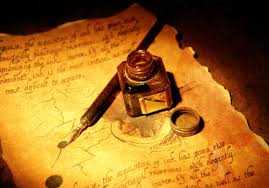 Holmes was able to deduce many details from the written word. By inspecting the pressure, angle, swirls, and consistency, Holmes could tell the gender, class, and maturity of the author. He could also make determinations about the character of the person whose penmanship was under scrutiny. In The Norwood Builder, Holmes determines by the timing of the imperfections in the scrawl of a will, that it was written aboard a train. Knowing that such an important document would not be transcribed in such a fashion, he correctly assumed duress.
Holmes was able to deduce many details from the written word. By inspecting the pressure, angle, swirls, and consistency, Holmes could tell the gender, class, and maturity of the author. He could also make determinations about the character of the person whose penmanship was under scrutiny. In The Norwood Builder, Holmes determines by the timing of the imperfections in the scrawl of a will, that it was written aboard a train. Knowing that such an important document would not be transcribed in such a fashion, he correctly assumed duress.
Today, handwriting analysis is used to determine forgeries, psychological profiling, and alterations in handwriting due to the influence of drugs, alcohol, duress, exhaustion, or illness.
The ransom note left at the scene of the JonBenet Ramsey murder is a prime example. It was intensely scrutinized and attempts were made to tie it to one of the parents.
The results remain inconclusive.
* * *
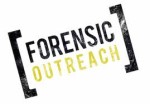 This article was originally published by my friends at Forensic Outreach, one of the best forensic education sites on the internet. They’ve now launched a new site called CASE Academy which I’m proud to support.
This article was originally published by my friends at Forensic Outreach, one of the best forensic education sites on the internet. They’ve now launched a new site called CASE Academy which I’m proud to support.
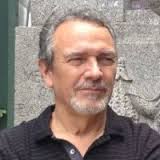 Doug Filter wrote this article for Forensic Outreach. He’s worked in legal support for three decades, developing visual communication tools that help litigators, prosecutors, and defense attorneys tell stories in court. Doug is an author, presenter, and designer. He’s worked on cases ranging from mapping body locations by interviewing a serial killer to explaining and animating the life style of trout in a water pollution case.
Doug Filter wrote this article for Forensic Outreach. He’s worked in legal support for three decades, developing visual communication tools that help litigators, prosecutors, and defense attorneys tell stories in court. Doug is an author, presenter, and designer. He’s worked on cases ranging from mapping body locations by interviewing a serial killer to explaining and animating the life style of trout in a water pollution case.
Doug’s speciality is learning scientific, technical, medical and complex case details and then explaining them to an audience of fact finders in a courtroom setting. He’s worked in jurisdictions in North America, South America, and Europe.

Fascinating stuff! So is Doug saying we now use Plaster of Paris to cast footprints because of Sherlock Holmes? That’s incredible.
I had no idea about P of P casts coming from Sherlock Holmes also, Sue. I found this article on Forensic Outreach some time ago & got Doug’s permission to republish it. For anyone out there who’s interested in a great site loaded with links & articles around forensic science, Forensic Outreach is a goldmine. Here’s their website http://www.forensicoutreach.com Twitter is @Forensicfix